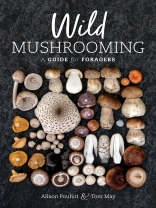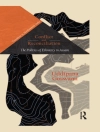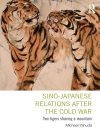Fungi are diverse, delicious and sometimes deadly. With interest in foraging for wild food on the rise, learning to accurately identify fungi reduces both poisoning risk to humans and harm to the environment. This extensively illustrated guide takes a ’slow mushrooming‘ approach – providing the information to correctly identify a few edible species thoroughly, rather than many superficially.
Wild Mushrooming: A Guide for Foragers melds scientific and cultural knowledge with stunning photography to present a new way of looking at fungi. It models ‚ecological foraging‘ – an approach based on care, conservation and a deep understanding of ecosystem dynamics.
Sections on where, when and how to find fungi guide the forager in the identification of 10 edible species. Diagnostic information on toxic fungi and lookalike species helps to differentiate the desirable from the deadly. Wild Mushrooming then takes us into the kitchen with cooking techniques and 29 recipes from a variety of cuisines that can be adapted for both foraged and cultivated fungi.
Developing the skills to find fungi requires slowness, not speed. This guide provides the necessary information for the safe collection of fungi, and is essential reading for fungus enthusiasts, ecologists, conservationists, medical professionals and anyone interested in the natural world.
Shortlisted, The 2022 Australian Book Industry Awards: Small Publishers‘ Adult Book of the Year
Longlisted, The 2022 Indie Book Awards: Illustrated Nonfiction
Inhaltsverzeichnis
Acknowledgements
Chapter 1 – The rise of wild mushrooming in Australia
Chapter 2 – What fungi are
Chapter 3 – Fungi in Australian biodiversity conservation
Chapter 4 – Major groups of fungi
Chapter 5 – Features of fungi
Chapter 6 – Names and identification
Chapter 7 – Finding fungi
Chapter 8 – Poisonous fungi
Chapter 9 – Edible fungi and their lookalikes
Chapter 10 – Fungi in the kitchen and on the table
Glossary
Further reading and resources
Index
Über den Autor
Tom May is a mycologist who has spent more than four decades getting to know Australian fungi. He has published widely on fungal taxonomy, ecology and conservation in scientific and popular literature, including checklists of Australian fungi and a key to genera of Australian mushrooms (Fun Key). He is active in international mycological groups such as the Nomenclature Committee for Fungi and in community natural history organisations, founding Fungimap in 1995. He was awarded the Australian Natural History Medallion in 2014.












